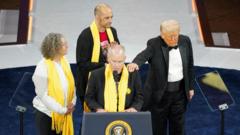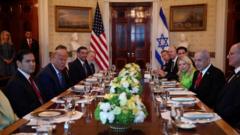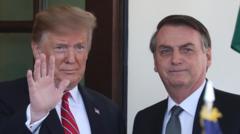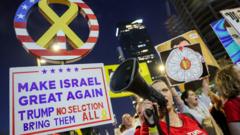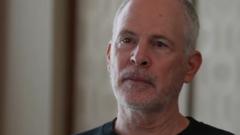The first round of US-Iran nuclear talks has concluded, with representatives from both nations expressing optimism about future discussions. The high-profile meeting, the first since the US withdrawal from the nuclear deal in 2018, lasted two-and-a-half hours and set a precedent for subsequent dialogues, encouraging a more direct form of communication.
US-Iran Nuclear Talks Generate Hope for Future Diplomacy
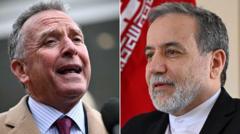
US-Iran Nuclear Talks Generate Hope for Future Diplomacy
Negotiations between Iran and the US show signs of progress after initial discussions in Oman.
In Muscat, the capital of Oman, US envoy Steve Witkoff and Iran's Foreign Minister Abbas Araghchi engaged in a "constructive" meeting mediated by Oman’s foreign minister, Badr bin Hamad al-Busaidi. The Iranian delegation characterized the atmosphere as respectful and peaceful, avoiding any inflammatory language that could exacerbate tensions. Moving forward, a second round of discussions is scheduled for next Saturday, with the White House confirming that both sides seek to address the complex issues amicably.
The retreat from the 2015 agreement by President Donald Trump has established a fraught backdrop for these talks. Iran seeks a deal that would facilitate relief from sanctions while still preserving its nuclear program, which it claims is for peaceful purposes. Meanwhile, the US remains under pressure from allies in the region, particularly Israel, to ensure that Iran does not develop nuclear weapons capability.
The initial talks featured indirect communications, with the two parties remaining in different rooms. However, brief exchanges did occur, hinting at a potential breakthrough in future discussions. Araghchi emphasized the aim for a "fair agreement" without allowing negotiations to drag on unnecessarily. This sentiment echoes Trump's previous assertions that Iran cannot be allowed to possess nuclear arms, while Iran insists it will not yield to military threats.
As both sides navigate these intricate negotiations, the focus remains primarily on Iran's nuclear ambitions. With escalating tensions and strategic military movements in the region, reaching a mutually beneficial outcome is crucial. The path ahead is challenging, but the first round of talks has laid the groundwork for what could be more substantive dialogue in the future.
The retreat from the 2015 agreement by President Donald Trump has established a fraught backdrop for these talks. Iran seeks a deal that would facilitate relief from sanctions while still preserving its nuclear program, which it claims is for peaceful purposes. Meanwhile, the US remains under pressure from allies in the region, particularly Israel, to ensure that Iran does not develop nuclear weapons capability.
The initial talks featured indirect communications, with the two parties remaining in different rooms. However, brief exchanges did occur, hinting at a potential breakthrough in future discussions. Araghchi emphasized the aim for a "fair agreement" without allowing negotiations to drag on unnecessarily. This sentiment echoes Trump's previous assertions that Iran cannot be allowed to possess nuclear arms, while Iran insists it will not yield to military threats.
As both sides navigate these intricate negotiations, the focus remains primarily on Iran's nuclear ambitions. With escalating tensions and strategic military movements in the region, reaching a mutually beneficial outcome is crucial. The path ahead is challenging, but the first round of talks has laid the groundwork for what could be more substantive dialogue in the future.

